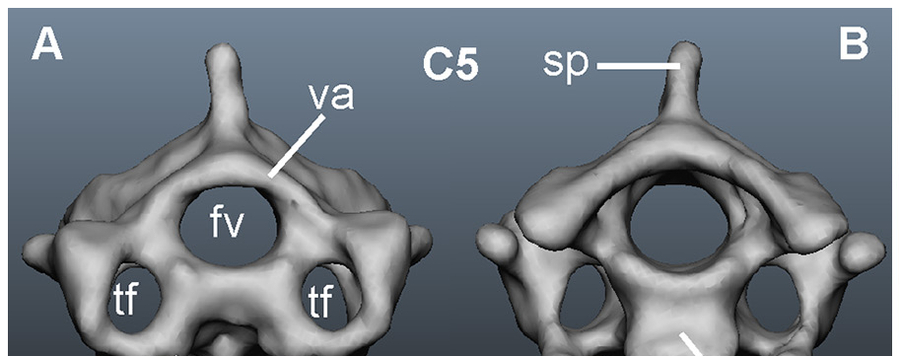
The Cervical Spine of the American Barn Owl
Background
Owls possess an extraordinary neck and head mobility. To understand this mobility it is necessary to have an anatomical description of cervical vertebrae with an emphasis on those criteria that are relevant for head positioning. No functional description specific to owls is available.
Methodology/Principal findings
X-ray films and micro-CT scans were recorded from American barn owls (Tyto furcata pratincola) and used to obtain three-dimensional head movements and three-dimensional models of the 14 cervical vertebrae (C1−C14). The diameter of the vertebral canal, the zygapophyseal protrusion, the distance between joint centers, and the pitching angle were quantified. Whereas the first two variables are purely osteological characteristics of single vertebrae, the latter two take into account interactions between vertebrae. These variables change in characteristic ways from cranial to caudal. The vertebral canal is wide in the cranial and caudal neck regions, but narrow in the middle, where both the zygapophyseal protrusion and the distance between joint centers are large. Pitching angles are more negative in the cranial and caudal neck regions than in the middle region. Cluster analysis suggested a complex regionalization. Whereas the borders (C1 and C13/C14) formed stable clusters, the other cervical vertebrae were sorted into 4 or 5 additional clusters. The borders of the clusters were influenced by the variables analyzed.
Conclusions/Significance
A statistical analysis was used to evaluate the regionalization of the cervical spine in the barn owl. While earlier measurements have shown that there appear to be three regions of flexibility of the neck, our indicators suggest 3–7 regions. These many regions allow a high degree of flexibility, potentially facilitating the large head turns that barn owls are able to make. The cervical vertebral series of other species should also be investigated using statistical criteria to further characterize morphology and the potential movements associated with it.





